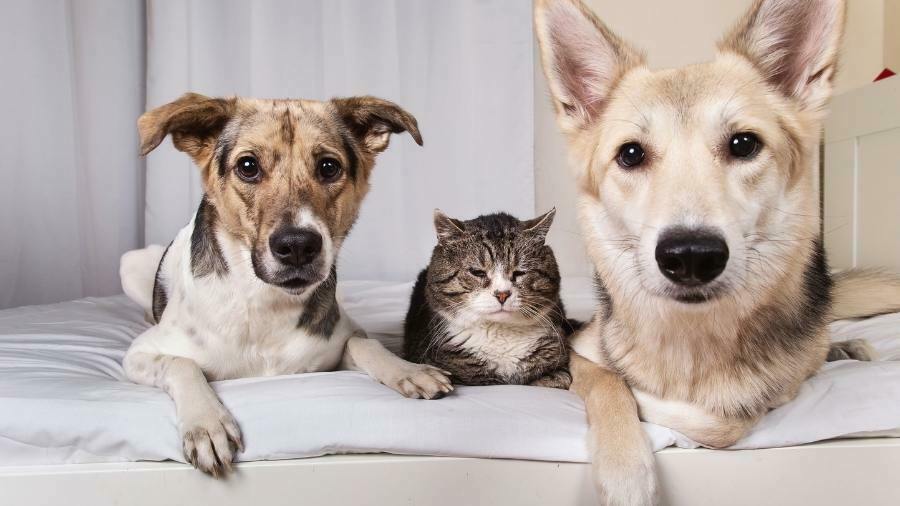
Every purchasing decision we make has an impact, not only on the well-being of our pets but also on the environment and the economy.
As it turns out, in our choice of pet beds and bedding, we may be unwittingly contributing to the damage being done to our planet’s delicate ecosystems.
The fabrics used for pet beds and bedding serve different purposes, depending on whether they’re used as filling or cover.
Let’s explore a few of these to help you find the best material for your pet’s bed and bedding.
Synthetic Materials
Pet beds made from synthetic fibres are usually marketed under a variety of names and descriptions, including faux-wool, poly-fleece, faux-suede, microfibre and plush.
There are different kinds of synthetic materials used in and for pet beds and bedding. The more common ones are nylon and polyester.
Nylon is water resistant, stands up well to the elements and can last a long time. For example, nylon mesh, stretched over a frame, is an excellent material for an outdoor dog bed.
The open mesh weave facilitates air circulation, helping to keep your dog cool and dry. Plus it’s easy to wash and quick-drying.
Polyester is another synthetic material widely used in pet beds and bedding because it is inexpensive, washable, and durable.
But polyester bedding and beds tend to smell quite quickly.
Furthermore, polyester, like nylon and other synthetics, has low biodegradability and therefore remains in the environment for years and years after it’s been disposed of.
It’s also worth noting that the washing of synthetic textiles is shedding microplastics into our environment, including the oceans.
Traces of microplastic have been found in marine life, our drinking water and the everyday foods we eat.
Hence, if you don’t want to contribute to the plastic pollution of our oceans and source of food, it’s better to choose natural fibres over synthetics.
Natural Materials
Cotton/Canvas
Cotton is a natural fibre derived from the cotton plant. It is used widely, in many forms and applications.
Canvas made from cotton is a popular material for dog beds, for example, and such beds are both durable and biodegradable.
Cotton, drill, or canvas is often used as the outer covering. A good-quality cotton canvas will be highly durable against wear and tear from the usual pet ’treatments’’, such as rough play, chewing, biting, and ‘’claw-work’’.
Some ‘’canvas’’ material may actually be made from synthetics or have a coating that is not biodegradable, such as PVC.
It makes the it easier to clean and maintain but it is at the expense of the environment when disposed of at its end of life.
Wool
Wool is a natural fibre; a renewable resource that comes mainly from sheep, which are shorn every year in summer.
The various properties of wool make it a superior material for pet beds and bedding in just about every way.
While wool is well-known for its insulative properties, what is perhaps less known is that it is also breathable and resistant to odours.
Wool is also naturally fire-retardant, an important consideration especially in bushfire-prone areas.
Wool repels the dust mites which cause allergies in both pets and humans. Which makes wool an excellent material if your pet or other members of the household have dust allergies.
For these reasons and more, a woollen pet blanket in winter is superior to a polyester, or even a cotton one.
And a pet bed firmly padded with wool also offers comfort and weight support to older pets.
In summer, wool will also help keep your pet cool by wicking away moisture, which many cheaper synthetic products cannot do.
Wool that is washable ups the ante further, by making it convenient to clean and maintain, without releasing more harmful substances into our environment.
Best material for a pet bed
In conclusion, if you are looking for a pet bed that will keep your fur baby comfortable in all seasons, is breathable, moisture-wicking, fire-resistant, and doesn’t shed harmful microplastics when washed, you can’t go past wool as the best material for a pet bed or cushion.
